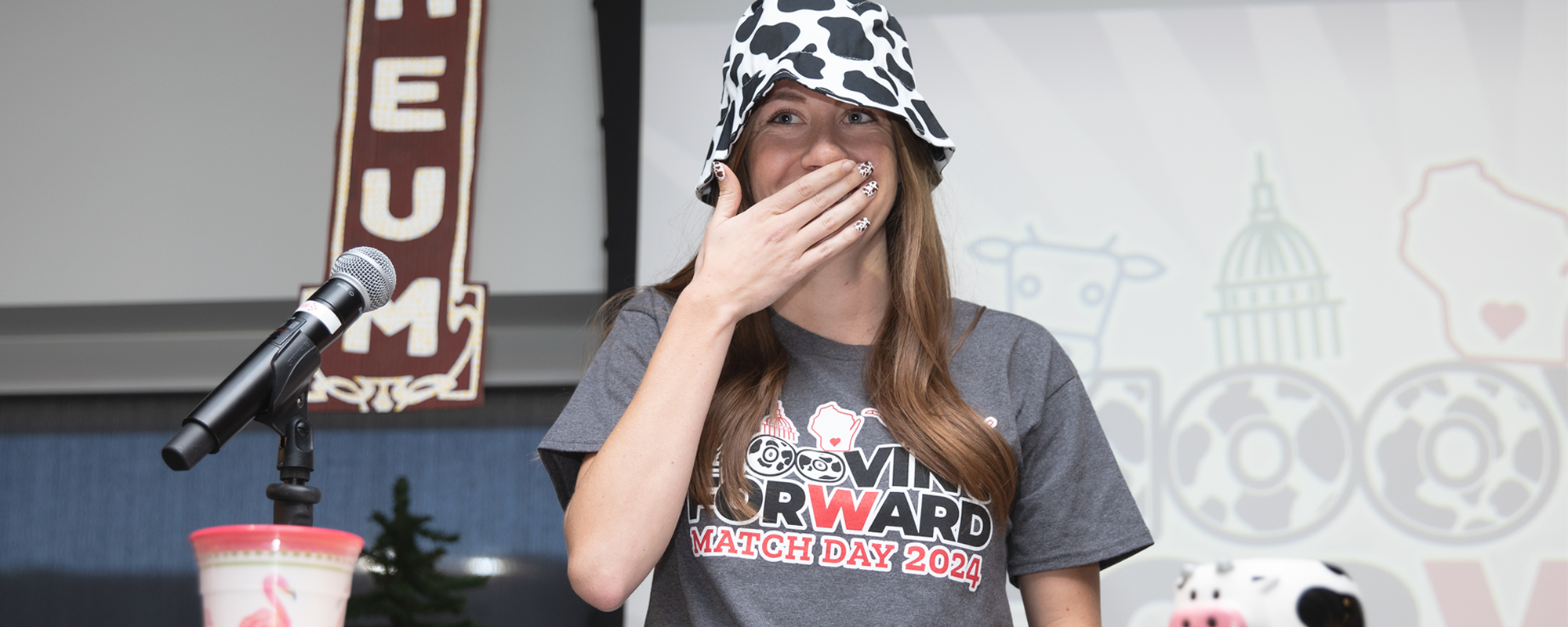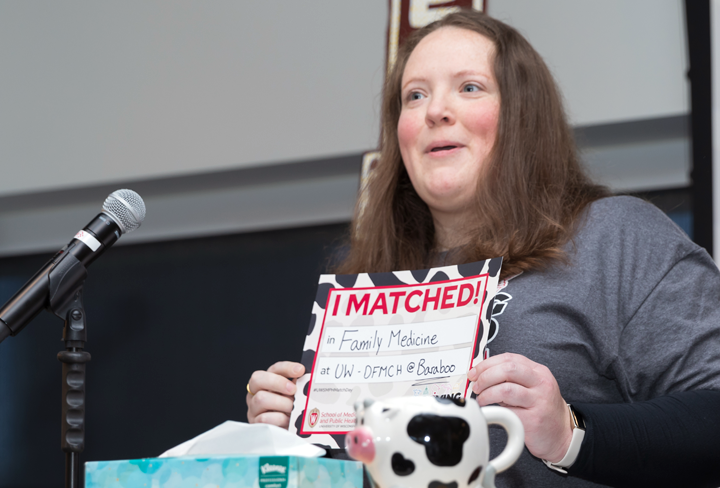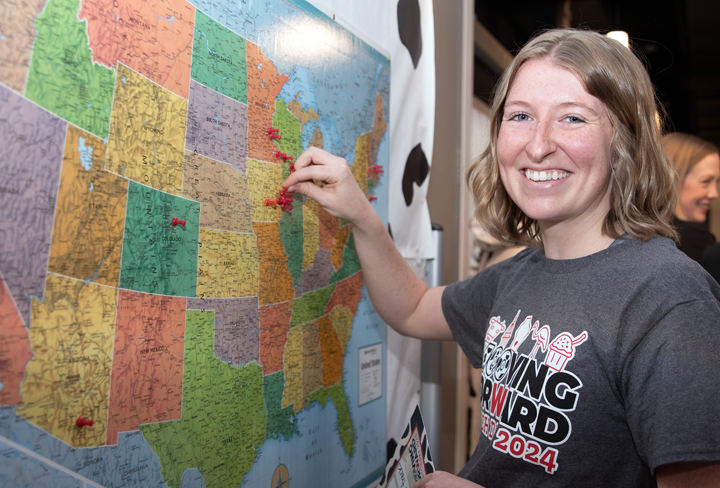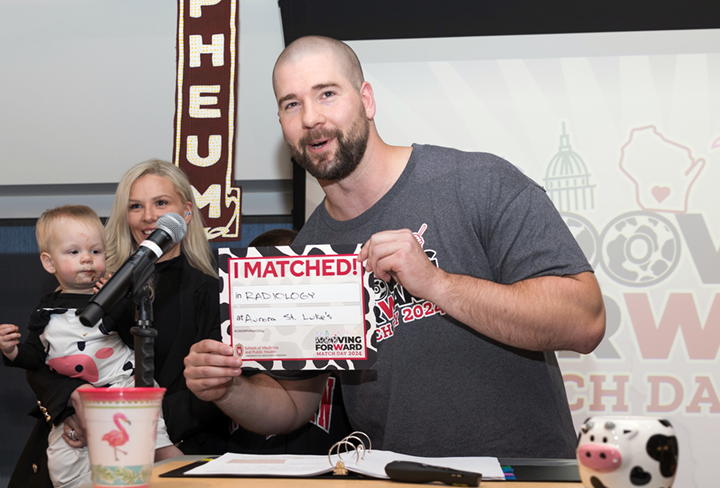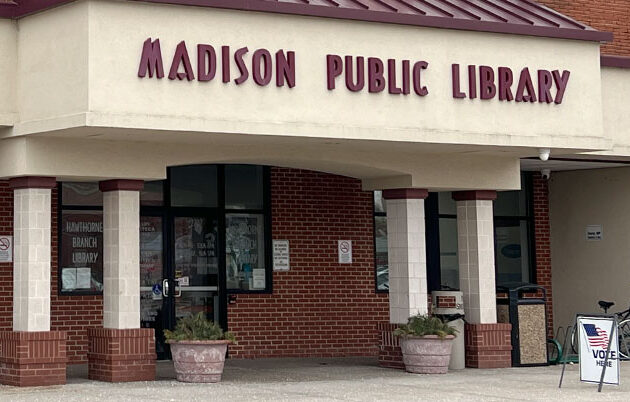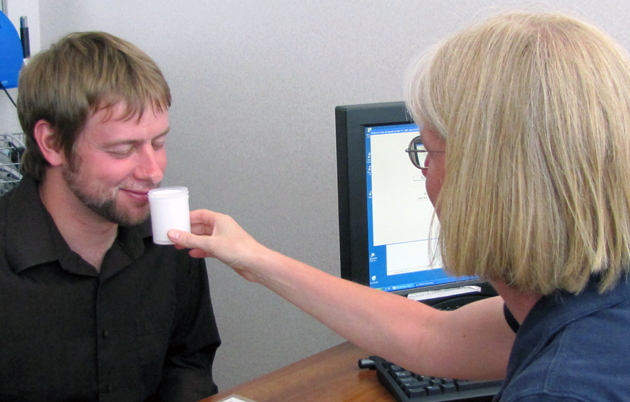The student-selected event theme of “Mooving Forward” served as a homage to the Dairy State. The day’s festivities kicked off with a skit by Dr. Cathy Lee-Miller, assistant professor of pediatrics, and Dr. Sam Lubner, associate professor of medicine, both of whom work closely with medical students throughout their education. The “Guide to Wisconsin” skit spoofed cultural and linguistic customs of the Upper Midwest. “You should always greet your patients with a ‘hello’ and ‘how ‘bout them Packers’ to show them you care,” Lubner quipped, to laughter from the crowd.
Dr. Robert N. Golden, dean of UW School of Medicine and Public Health, shared wisdom interwoven with Wisconsin-inspired puns as students awaited the news about where the next step in their clinical postgraduate training would take them.
“Rest assured this class is the cream of the crop; individually you have matched into top quality programs, and collectively you are embarking on careers that span the entire continuum of primary care, specialty practice, and subspecialty fields,” Golden said.
“We are proud of all you have achieved during your years here. Your energy and idealism have made us a better place. And we know the best is yet to come. So as you prepare to mooo-ve onto the next phase of your professional development, rest assured that I am confident that – like a Wisconsin cow in the springtime – each of you will be out-standing in your field.”
This year, 172 students matched into residency programs in 29 states. Of medical students graduating in 2024 who pursued residency training, 100% matched into a program. One third of matching students will perform a residency in family medicine, internal medicine or pediatrics; many will stay in primary care while others will use their background as a foundation for further sub-specialization and fellowship training in areas such as cardiovascular medicine, nephrology or infectious disease.
For many in the class, the Badger state will continue to be home to their training for the next few years. Nearly 40% of matching students will complete their residencies in Wisconsin, adding to the state’s health care workforce at a critical time. This is the highest percentage of students matching in the state in the last decade. Some students shared that they plan to return to Wisconsin to practice after their residencies elsewhere. But many will carry memories of their time in the state to residency locations at prominent organizations spanning New England to the Southwest to the Pacific Northwest.
